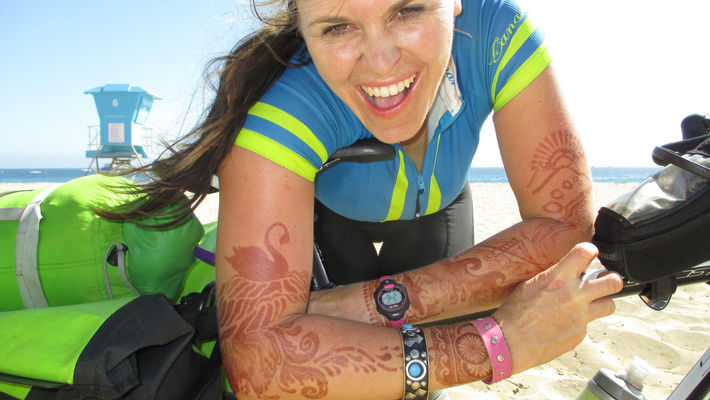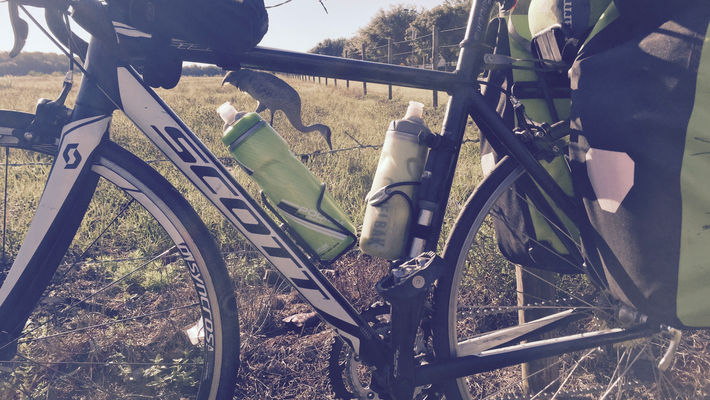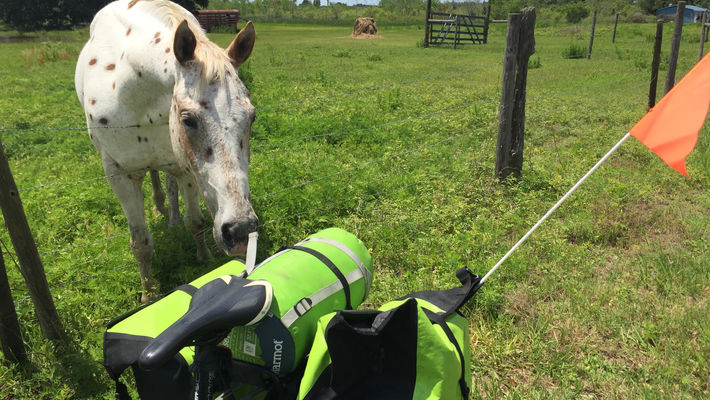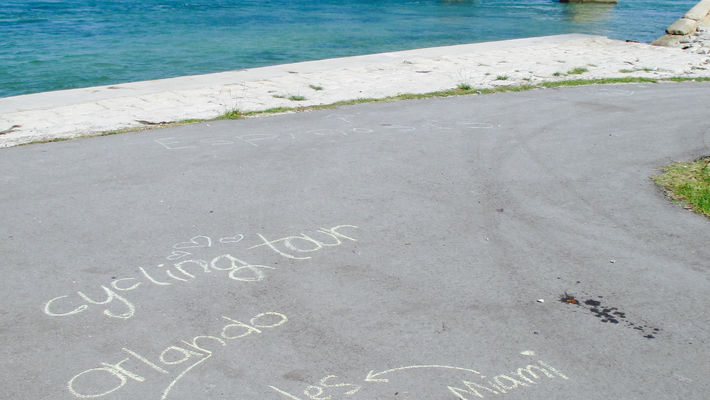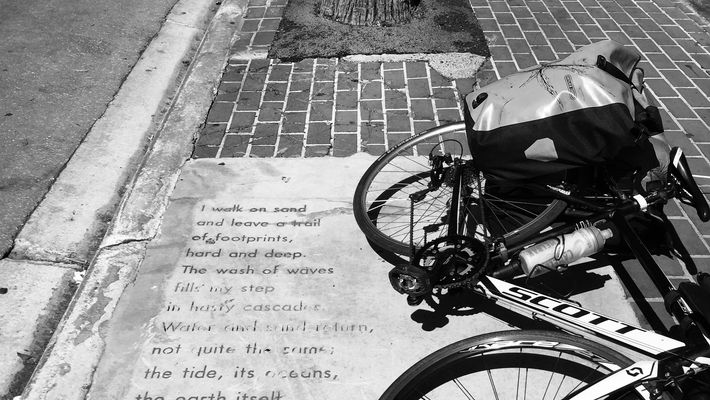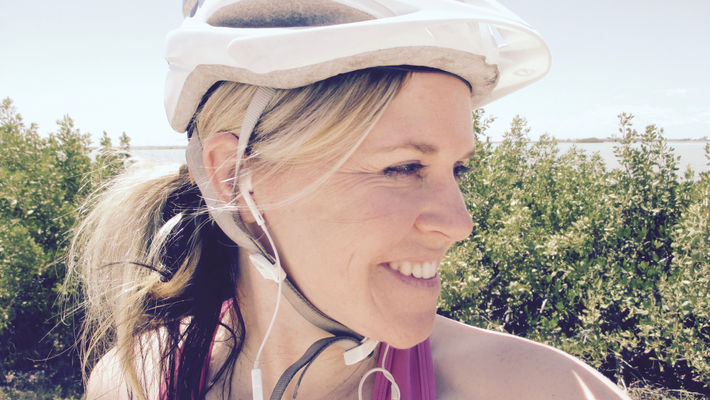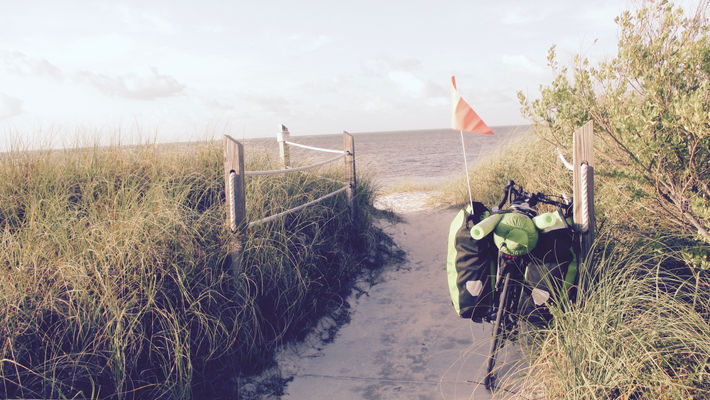
PART III
A contemplative cyclist is a new breed of athlete who is as much spiritually-inclined as devoted to the sport, but more than merely conjoining spirituality and athletics, is a broker of a deep schism, one who through the act of contemplative cycling unifies body and soul. Paired with a bike, a practitioner informed by this attitude, set to this point of departure, open to this intimate wedding of soma and soul, locates a practice energized yet single-point focused enough for the apprenticeship of higher consciousness. Through the rigor and ritual of this kind of exercise, exercising all engaged faculties, soulfulness flourishes.
The road is a relentless, ruthless kind of teacher, only an occasional charmer, mostly expecting a good deal of steady plodding without immediate reward. It cultivates patience born of the rigors and limitations imposed by such slow, grueling travel. It asks that you tolerate the elements and the fluctuations of your open-air exposure to Mother Nature as you ride long hours in the saddle. It often contains mileage you must traverse well past your self-declared threshold of fatigue. It involves many hours, much discomfort, and repetitive motions, so it forces you to get intimately familiar with, and eventually come to terms with, do battle with, the workings of your own mind.
It uses the living text of cycling and all of its varied responses, elicited and then examined, modified, excised, replaced, or consciously adopted and more deeply incorporated, to develop an art that renders increasingly beautiful forms the least of which is a quanta of energy and a capacity for spiritual attunement in a demanding world characterized by struggle. I find much greater resonance in Nietzsche’s description of “harsh and rugged spirituality” over light, New Age fluff. Contemplative cycling qualifies as a practice in which retreat into stifling comfort, disengaged apathy, or false reassurances is blocked through its requirements of consistently-engaged exertion in order to keep the practice going.
Through an active contemplation, a contemplative action, which volleys and rounds an endless, deepening cycle of reaching down into our nature and reaching out into towering Nature, the gyrating wheel spins its seamless revolutions toward Wholeness. It is, quite simply, instinctually satisfying to move in this way; to bring consciousness into these motions yields infinite bliss.
The demanding exertion of continuous aerobic activity on the ever-present cusp of “going anaerobic’” might just be a perfect prayer wheel to instigate a whole-body meditation. Endurance cycling primes the cyclist for a kind of flow state that the positive psychologists made so famous. Endurance can be a means of softening inner blocks and body armor necessary for spiritual transfigurations to occur. Long hours in the saddle focus attention, flush toxicities, clear away disharmonies, animate dormant interiors, strengthen and circulate chi, or vital life energy, fueling the engine that interconnects subtle and dense body. This fully-immersive, continuous open-air transit reconnects as above, so below, blurring distinctions between body, heart, and mind, as well as cyclist and the land cycled through. Far enough into the altered state-inducing, consciousness-expanding transportation, the bike flows not on, but as, its unyielding carpet of unbroken asphalt. A perception of seamless integration of bike, conscious body, and environs commences.
Focusing attention on the quality of presence within the body is a perennial skill for spiritual and emotional attunement whether on or off the saddle, one that cycling is well-adapted for. Such presence might best be described as being open, without resistance, to feeling a wide range of bodily sensations, feelings, and self-states by cultivating a diffuse awareness that is not willful but is discerning, receptive, and inviting. Such awareness is spread throughout the body: it does not pool into cognition but suffuses the deep core, penetrates layers of tissue, and extends into the extremities. Presence is a direct means of “coming back home” to real-time, local, unfolding reality, to the oft-quoted “here-and-now”, the only place to properly embody our energy and reap the creative bounty that unlocks out of the peaceful settledness of belonging to our truer, fuller nature. Overcognition, it is said, is a primary affliction of Western civilization. Unconsciously, rarely are we really all that open to our ongoing, felt experience, having become an abstraction of over-analysis, beset by worry about the future, rumination over the past, or simply thinking through mental categories rather than feeling or sensing what’s within and around us. Overcognition also sets us up for being completely identified with egoic or social identity, or what Alan Watts profoundly describes as the “profane reality” over the ‘sacred’ from which it all came, the lesser of which the bike and these bare cycles of psychocosmic energy don’t comprehend or care to indulge.
Bereft of abiding connection with feeling and sensing, we are subject to chronic alienation from our deeper natures that have incredible capacity for self-awareness that might joyfully experience this big, blue, and beautiful world. Cycling can serve as a continuous reminder of the long-forgotten, neglected bodily interior that acts as a source for this feeling and sensing through the pathway of its physiologic changes, as the body supplies and distributes glucose and oxygen-rich blood to working muscles, what feels like fire, water, air, and subtle ether through the meridians, and maybe even a touch of that elemental energy that glistens and glitters through crushed-up pieces of mica-flecked granite embedded in tarmac.
